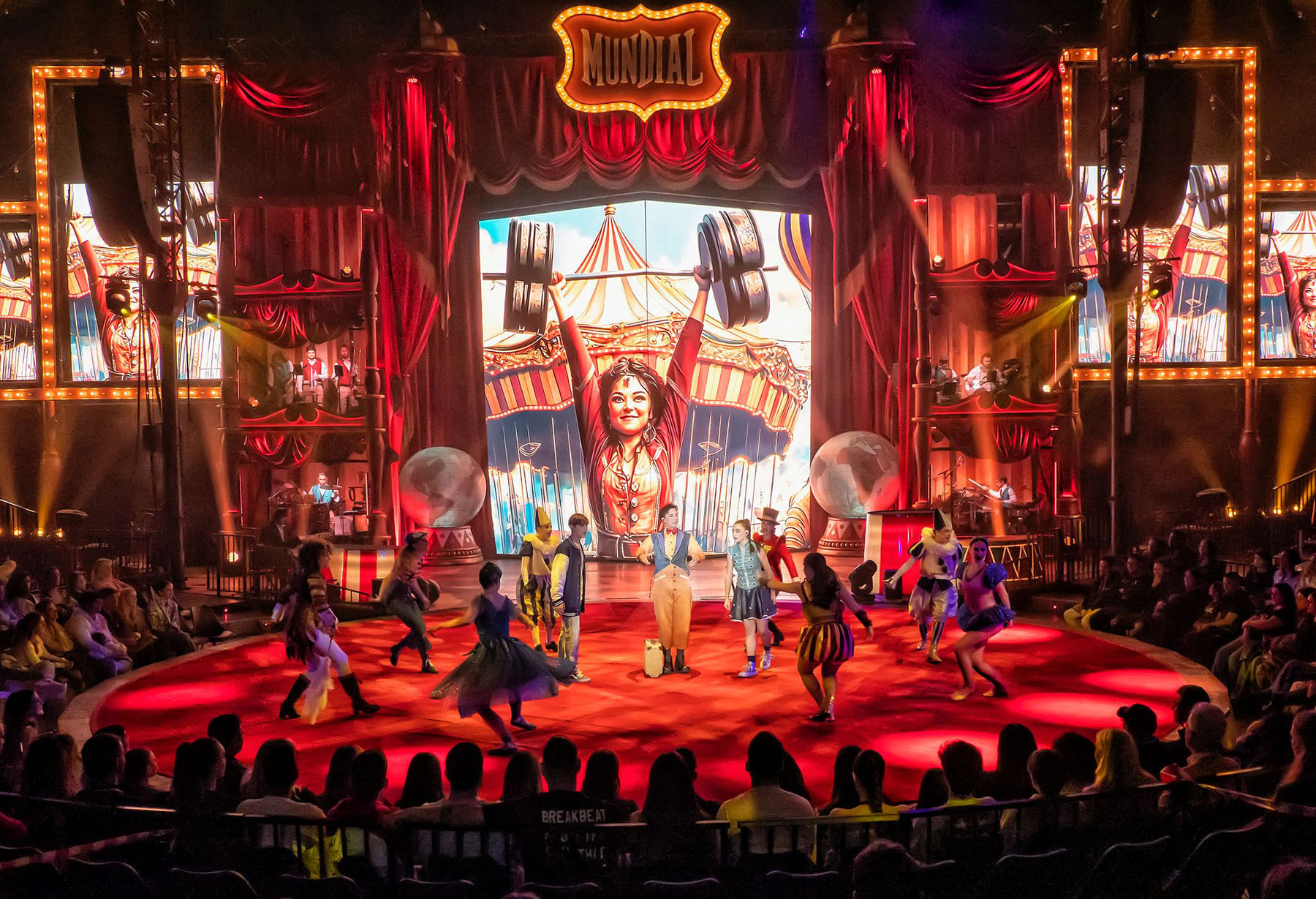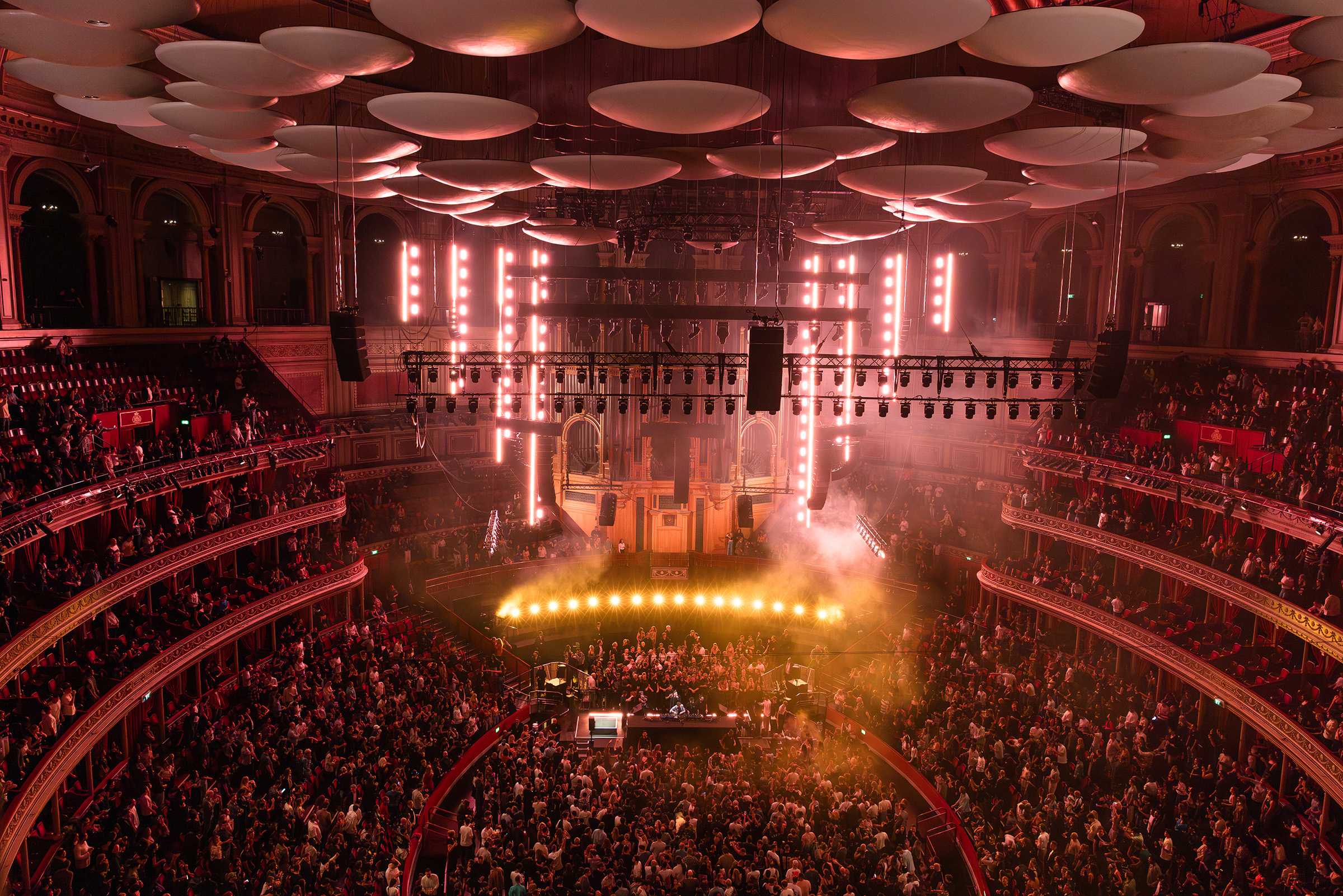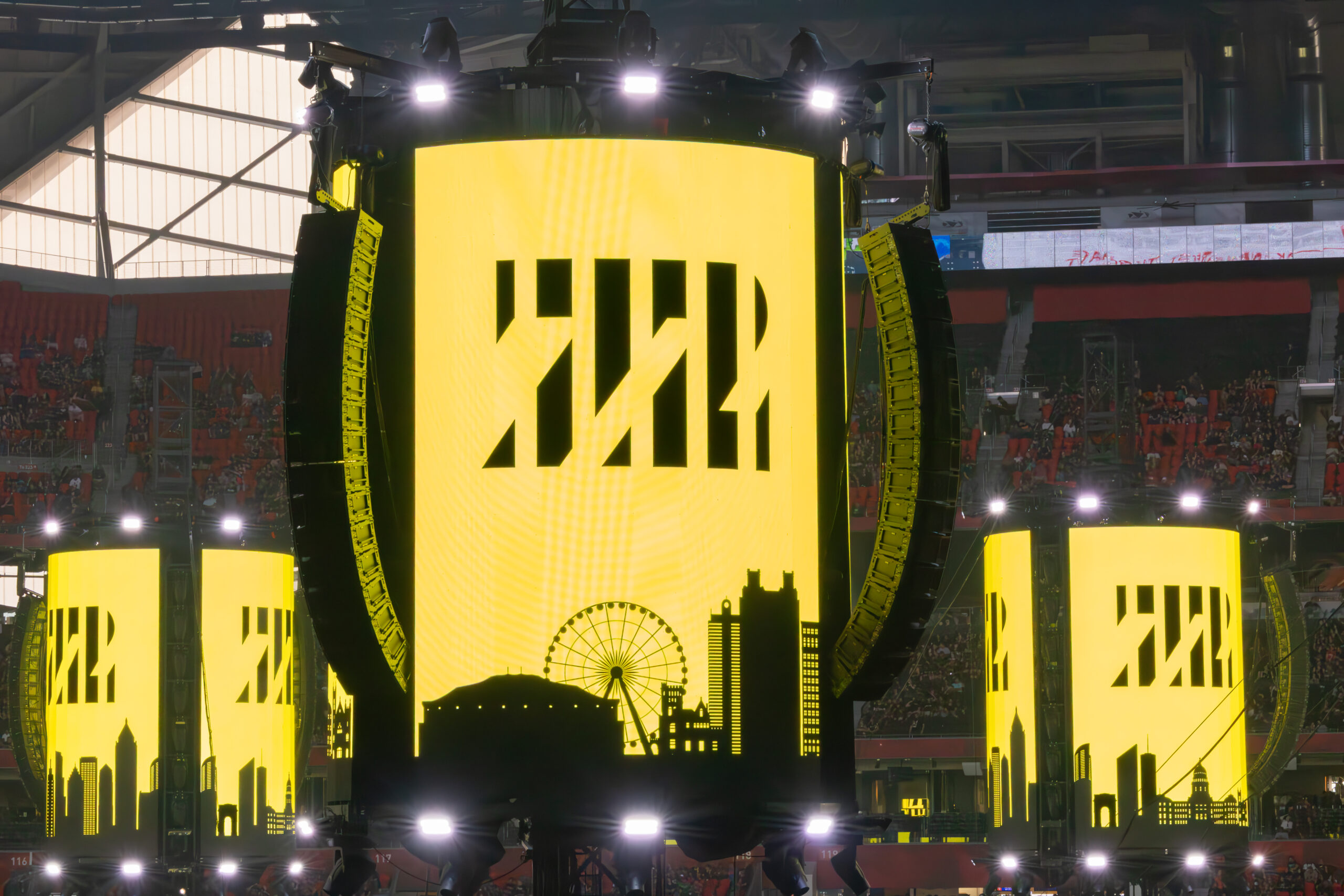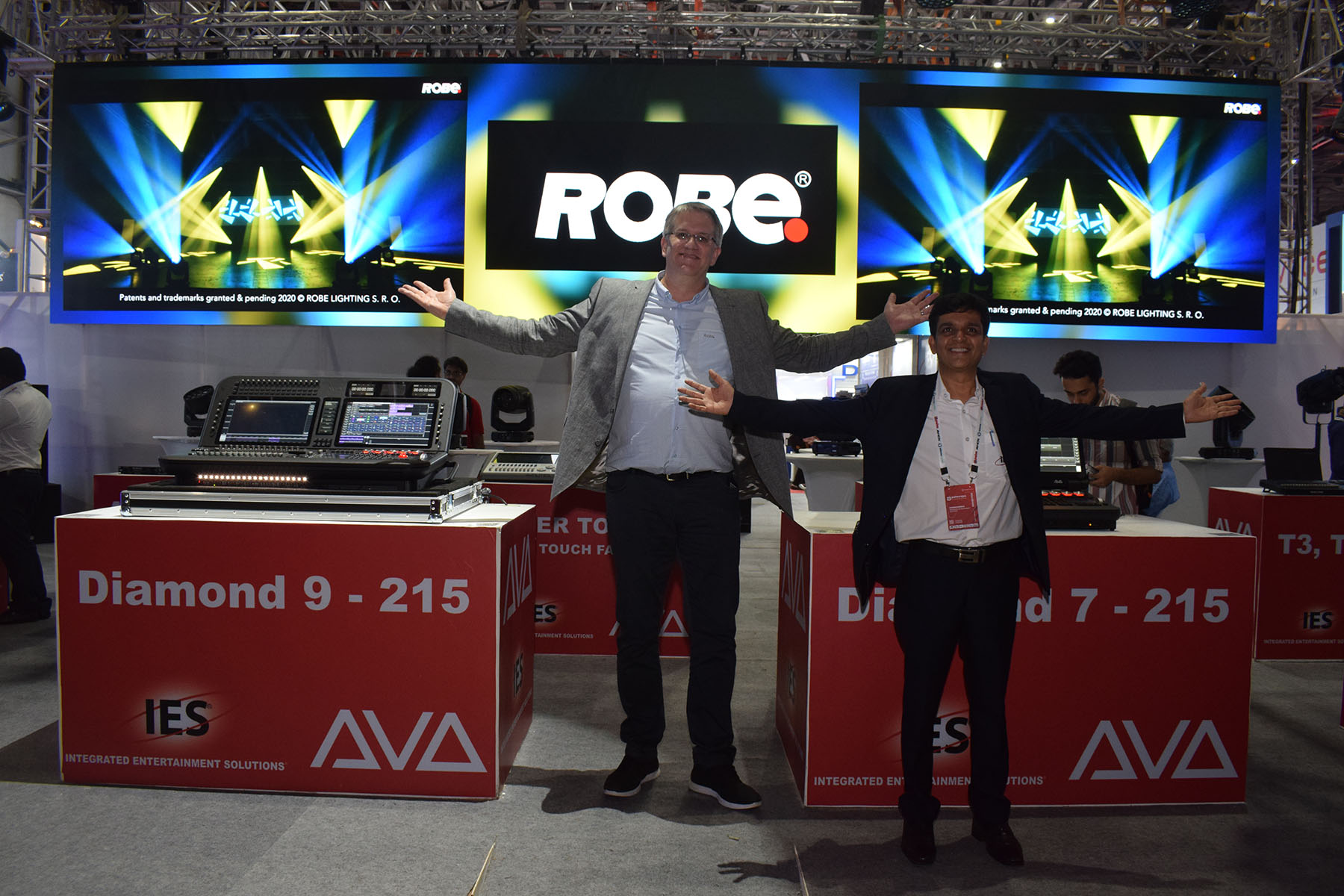LONDON — XL Video UK once again supported Oasis with full video production for their current Dig Out Your Soul world tour and also provided a fully HD PPU/camera package for the band’s summer stadium and outdoor special shows. XL is also supplying gear for a third variation on Oasis’ video design — similar to, but larger than, the original touring version — for their festival headline slots.
XL’s project manager Des Fallon credited the Oasis production management team and Michael O’Connor, saying that “their attention to detail is second to none, they totally understand the importance of video and the role it plays in the show, and making things happen smoothly and efficiently in video world is very easy.”
For the large shows, XL Video is working both directly for Oasis and for live video director Dick Carruthers’ company, Cheese Film & Video. The stadium show video is a mix of playback and I-Mag.
Two 8 mm Mitsubishi screens stage left and right provide playback to the majority of the audience at the outdoor/stadium shows. Each measures 10 modules wide by eight high and they deliver HD clarity.
Onstage, there are five columns of Barco MiTrix, each made up of 144 panels — a subtle increase from the four-column arena touring version of the design. This five-column MiTrix setup is also used for festivals.
Another visual aspect for both the original arena touring setup and the festival setup are four standard definition robo-cams. LD Rob Gawler operates these along with the touring/festival content for the MiTrix surfaces. XL is also supplying the three Catalyst media servers Gawler uses to feed content to the MiTrix and the HD robo-cam units, which are swapped in for the outdoor and stadium gigs.
To enhance sight lines for sections of the audience positioned at extreme angles to the stage for the outdoor shows, XL is supplying two additional Lighthouse R7 left and right LED screens, each five panels wide and four panels high. They offer a TX feed of the stage action.
The stadium package is completed with one of XL Video’s full HD PPUs, including six Sony E50 HD broadcast quality cameras.
Dick Carruthers mixes the show from the FOH position, just behind the lighting desk, and has designed the video control set up for flexibility, with a central matrix at its hub to route any source to any destination.
The main Mitsubishi side screen I-Mag mix from the 10 cameras (six operated and four robos) is controlled via a Snell & Wilcox Kahuna console operated by Carruthers. It was specified because it can mix numerous HD and SD sources and achieve complex DVE processing quickly, rendering material onscreen in real time.
{mospagebreak}At strategic moments, elements of the I-Mag are also output to the MiTrix columns. Although there are some very precise cues, other elements of the mix are a fluid process, which Carruthers changes, improv-style, each night.
“Having all sources capable of being sent everywhere is a simple concept that’s complex to achieve,” he explains. He creates some novel effects along the way, such as a sequence where flowing lava morphs into facial close-ups using the Kahuna’s contour mapping facility in the song, “To Be Where There’s Life.”
The system also allows for imaginative scope. A single image or camera feed can be output across seven screens, such as a sole audience shot during “Don’t Look Back In Anger.” At other times, it can be offbeat multi-snapshots from individual cameras mapped to individual screens for quirky, questioning looks.
Camera movement is part of the video aesthetic for the tour. There is a tracking dolly at FOH and another in the pit, plus a jib, and two hand-helds oscillate between being onstage and offstage. Everything is in a constant state of flux.
Also at FOH is a Barco Encore multi-screen system provided by XL and operated by Richard Turner. This is primarily used for controlling the I-Mag elements sent to the MiTrix screens and for interacting with Gawler’s Catalyst, generated playback footage.
A GV Kayak mixer/switcher is used as backup and a stills store. With all three console outputs — and Gawler’s Catalysts also fed into the matrix, the show could be conceivably controlled from any one unit.
An EVS machine is used for all the slo-mo effects, which adds another layer of visual intricacy — and one that’s proven to be popular with both band and production.
“You have to be bold,” Carruthers says, and the EVS enables “live” slo-mos that can be instantaneously cut to different screens in real time, right in the heat of the moment.
The three Catalysts driven by Gawler’s Hog 3 lighting console deal with all the playback material going onto the MiTrix columns, and are tied in with his lighting cues. This system functions independently for festivals and as the ongoing arena tour package.
Gawler also has a TX feed recording from the outdoor events, which he can use for festivals. For the stadium/outdoor shows, Gawler’s playback footage and the robo-cam feeds are amalgamated with the various broadcast camera feeds via the Encore system, and Justine Catterall joins the FOH team providing additional playback production.
The onscreen material has become a real talking point, and with many shows starting in daylight, the clarity of the output makes a big difference to the audience’s ability to enjoy the video elements throughout the entire show.
“Oasis have been at the top of their genre for over a decade and are still embracing fresh and innovative ideas and investing in high production values for their audience,” Fallon said. “It’s great to be part of this”.
For more information, please visit www.xlvideo.tv



